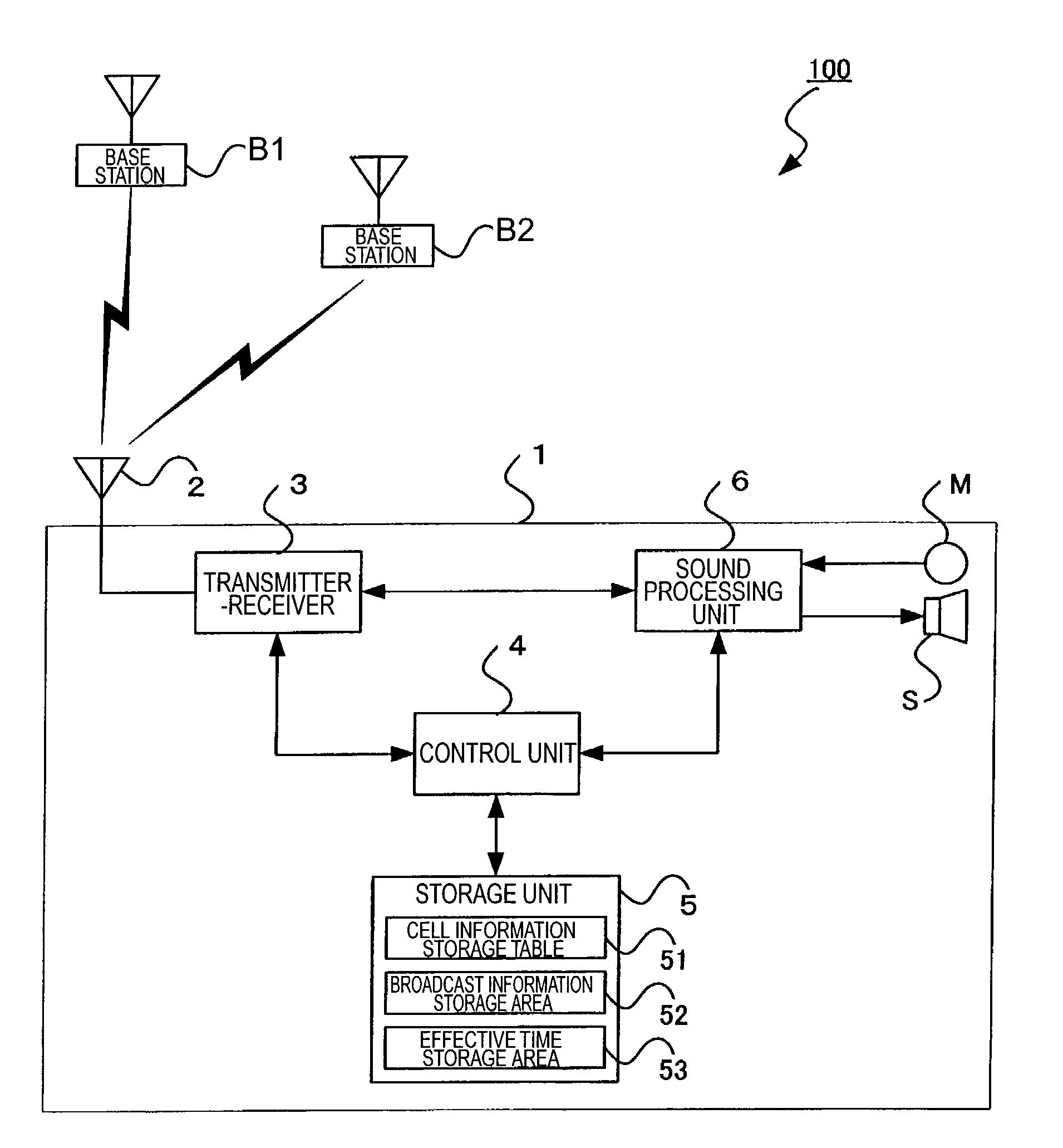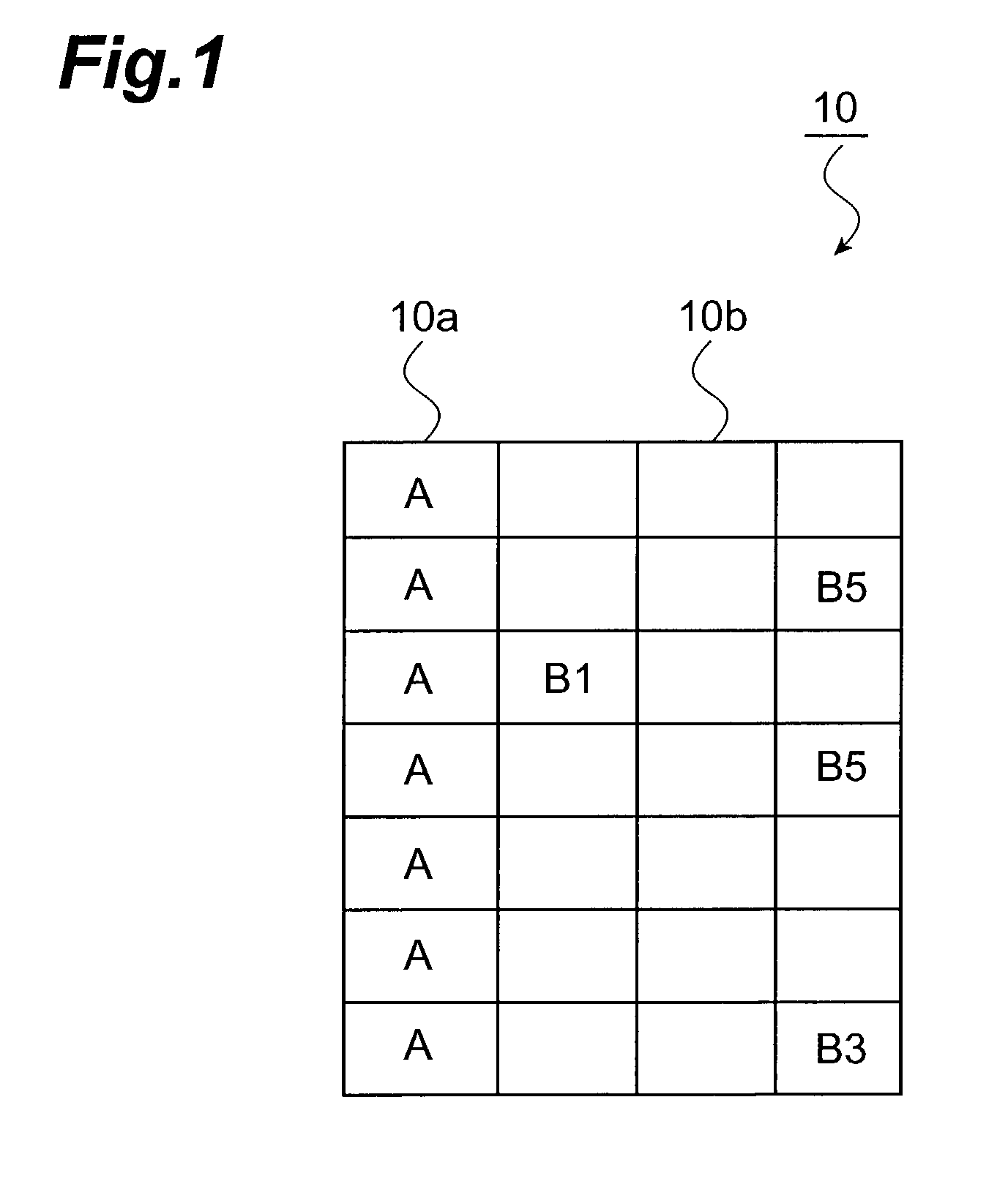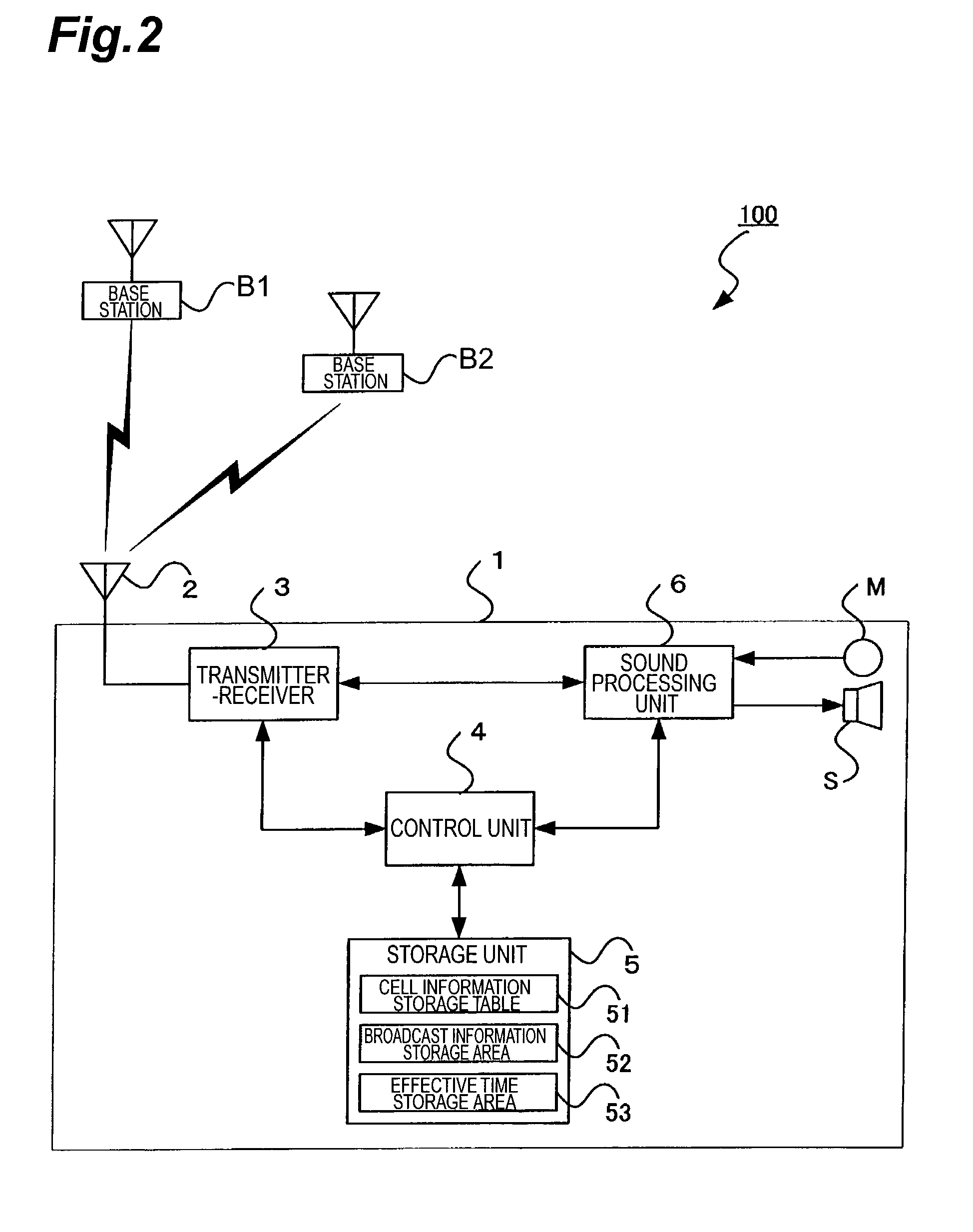Mobile communication terminal, broadcast information storing method, cell transfer method, and mobile communication system
- Summary
- Abstract
- Description
- Claims
- Application Information
AI Technical Summary
Benefits of technology
Problems solved by technology
Method used
Image
Examples
first embodiment
[0050]A mobile communication system 100 in a first embodiment of the present invention will be described below in detail with reference to the accompanying drawings. The broadcast information will be described as a premise of description of construction and operation. The broadcast information consists of a plurality of data. In order to make clear distinction between individual data as constitutive entities of the broadcast information and the entire data as an aggregate, the former will be referred to as “broadcast information constituent data” and the latter as “broadcast information.”
[0051]FIG. 1 is a schematic diagram showing a configuration example of broadcast information 10. As shown in FIG. 1, the broadcast information 10 is comprised of a broadcast information constituent data A group 10a and a broadcast information constituent data B group 10b. The broadcast information constituent data A group 10a is composed of a plurality of broadcast information constituent data A ind...
second embodiment
[0083]The second embodiment of the present invention will be described below. The configuration will be described first. The basic configuration of the mobile communication system in the present embodiment is much the same as the configuration of the mobile communication system 100 in the first embodiment. Therefore, the components will be denoted by the same reference symbols and the description thereof will be omitted. The following will thus detail only differences from the first embodiment.
[0084]The storage unit 5 has an effective time storage area 53. The effective time storage area 53 stores effective time data. The effective time data is numerical data indicating a time from a time point when the mobile phone 1 receives broadcast information, to a time point when the broadcast information becomes of no effect.
[0085]A specific data storage example will be presented later, and the cell information storage table 51 has at least the scrambling code storage area 51a, the value-tag...
third embodiment
[0098]The third embodiment of the present invention will be described below. The present embodiment is a composite form of the first embodiment and the second embodiment described above. The configuration will be described first. The basic configuration of the mobile communication system in the present embodiment is much the same as the configuration of the mobile communication system 100 in the first embodiment and the second embodiment. Therefore, the components are denoted by the same reference symbols and the description thereof is omitted herein. The following will detail only differences from the first embodiment or the second embodiment.
[0099]A specific data storage example will be described later, and the cell information storage table 51 has at least the scrambling code storage area 51a, the value-tag storage area 51b, the cell ID storage area 51c, and the elapsed time storage area 51d.
[0100]The operation will be described next. The cell transfer process in the third embod...
PUM
 Login to View More
Login to View More Abstract
Description
Claims
Application Information
 Login to View More
Login to View More - R&D
- Intellectual Property
- Life Sciences
- Materials
- Tech Scout
- Unparalleled Data Quality
- Higher Quality Content
- 60% Fewer Hallucinations
Browse by: Latest US Patents, China's latest patents, Technical Efficacy Thesaurus, Application Domain, Technology Topic, Popular Technical Reports.
© 2025 PatSnap. All rights reserved.Legal|Privacy policy|Modern Slavery Act Transparency Statement|Sitemap|About US| Contact US: help@patsnap.com



